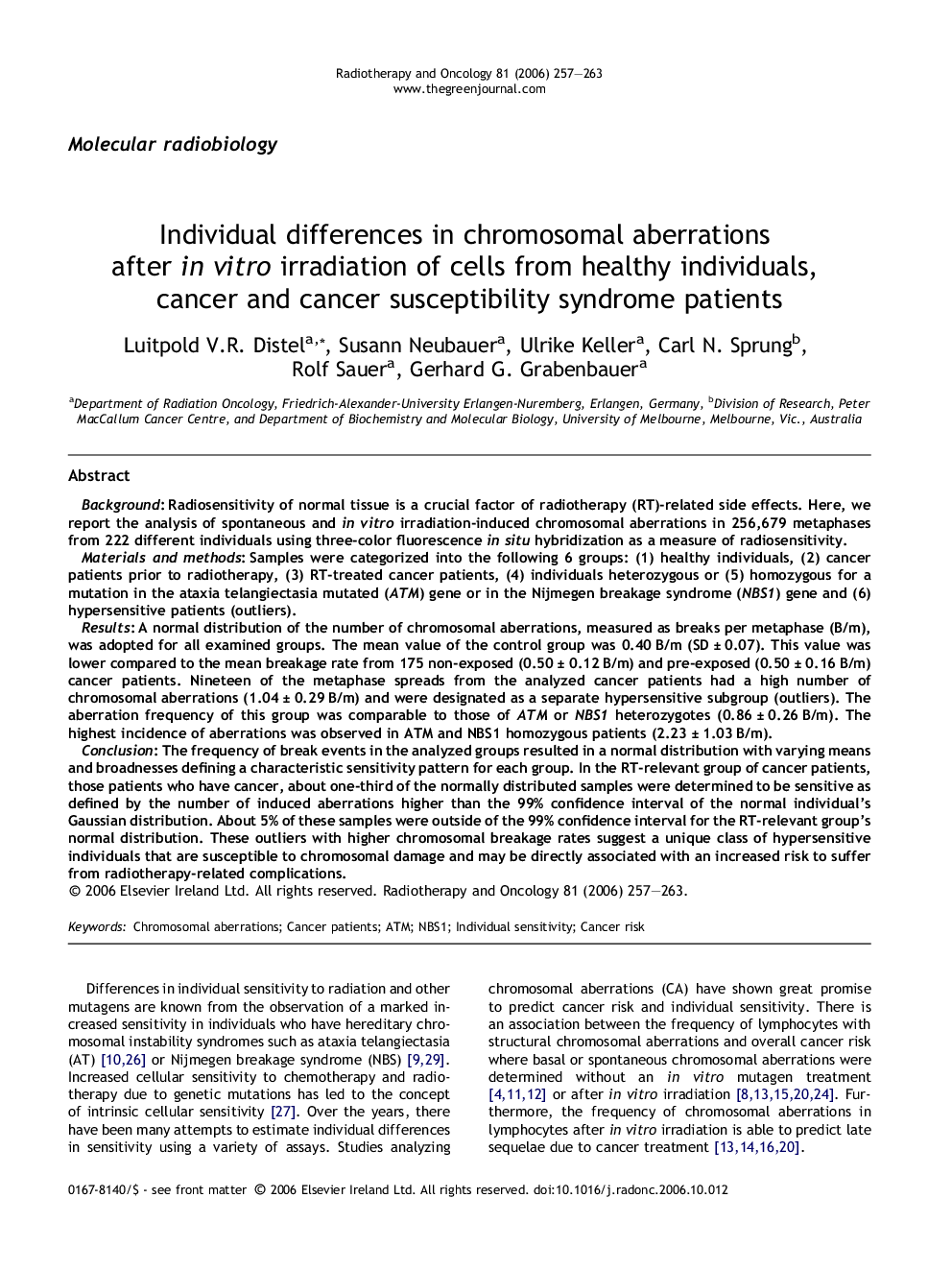| Article ID | Journal | Published Year | Pages | File Type |
|---|---|---|---|---|
| 2161156 | Radiotherapy and Oncology | 2006 | 7 Pages |
BackgroundRadiosensitivity of normal tissue is a crucial factor of radiotherapy (RT)-related side effects. Here, we report the analysis of spontaneous and in vitro irradiation-induced chromosomal aberrations in 256,679 metaphases from 222 different individuals using three-color fluorescence in situ hybridization as a measure of radiosensitivity.Materials and methodsSamples were categorized into the following 6 groups: (1) healthy individuals, (2) cancer patients prior to radiotherapy, (3) RT-treated cancer patients, (4) individuals heterozygous or (5) homozygous for a mutation in the ataxia telangiectasia mutated (ATM) gene or in the Nijmegen breakage syndrome (NBS1) gene and (6) hypersensitive patients (outliers).ResultsA normal distribution of the number of chromosomal aberrations, measured as breaks per metaphase (B/m), was adopted for all examined groups. The mean value of the control group was 0.40 B/m (SD ± 0.07). This value was lower compared to the mean breakage rate from 175 non-exposed (0.50 ± 0.12 B/m) and pre-exposed (0.50 ± 0.16 B/m) cancer patients. Nineteen of the metaphase spreads from the analyzed cancer patients had a high number of chromosomal aberrations (1.04 ± 0.29 B/m) and were designated as a separate hypersensitive subgroup (outliers). The aberration frequency of this group was comparable to those of ATM or NBS1 heterozygotes (0.86 ± 0.26 B/m). The highest incidence of aberrations was observed in ATM and NBS1 homozygous patients (2.23 ± 1.03 B/m).ConclusionThe frequency of break events in the analyzed groups resulted in a normal distribution with varying means and broadnesses defining a characteristic sensitivity pattern for each group. In the RT-relevant group of cancer patients, those patients who have cancer, about one-third of the normally distributed samples were determined to be sensitive as defined by the number of induced aberrations higher than the 99% confidence interval of the normal individual’s Gaussian distribution. About 5% of these samples were outside of the 99% confidence interval for the RT-relevant group’s normal distribution. These outliers with higher chromosomal breakage rates suggest a unique class of hypersensitive individuals that are susceptible to chromosomal damage and may be directly associated with an increased risk to suffer from radiotherapy-related complications.
